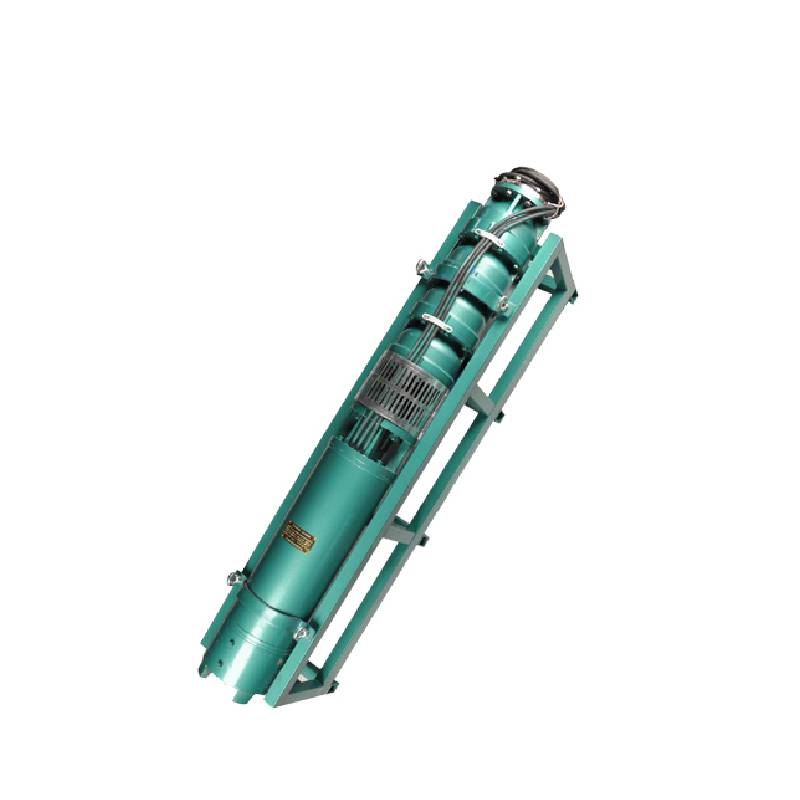Oct . 10, 2024 18:35 Back to list
Efficient Submersible Pumps for Enhanced Well Water Management and Sustainable Resource Utilization
The Efficiency and Versatility of Well Submersible Pumps
Well submersible pumps are a critical component in the realm of water extraction and management. These robust devices are submerged deep in water, often in wells, and designed to pump water to the surface efficiently and effectively. In various applications, from residential water supply to agricultural irrigation and industrial usage, submersible pumps have proven their durability and versatility.
Understanding Submersible Pumps
A well submersible pump consists of a hermetically sealed motor and a pump body that operates underwater. The primary advantage of this design is its ability to push water to the surface rather than pulling it, which is the mechanism employed by above-ground pumps. This push mechanism allows for higher efficiency and reduced energy consumption. Most submersible pumps operate on either single-phase or three-phase electrical systems, providing flexibility in various settings.
Applications of Well Submersible Pumps
These pumps are used widely in residential, agricultural, and industrial sectors. In residential settings, submersible pumps can supply water for drinking, cooking, and irrigation needs. For agricultural purposes, they are essential in extracting groundwater for irrigation, ensuring crops receive adequate moisture levels critical for growth. Industrial applications may include dewatering tasks, cooling system functions, or in processes requiring precise water delivery.
Advantages of Submersible Pumps
well submersible pumps

One of the primary advantages of submersible pumps is their efficiency. By working submerged, they minimize issues related to cavitation, a condition that occurs in above-ground pumps when the pressure of the liquid falls below the vapor pressure, leading to potential damage. Furthermore, submersible pumps are typically more compact than surface pumps, requiring less space to install, which is particularly important in areas where vertical well space is limited.
Durability is another significant benefit. They are built to withstand harsh conditions, including brackish or corrosive environments, making them ideal for various water types. The sealed design protects the motor from water and contaminants, extending the pump's lifespan and reducing maintenance needs.
Choosing the Right Submersible Pump
When selecting a well submersible pump, several factors must be considered. Firstly, the depth of the well is crucial; pumps are rated for specific depths and must be matched accordingly. Additionally, flow rate requirements and the type of fluid being pumped can influence the choice. It is also essential to consider electrical supply options, as some locations may only support single-phase power.
Proper installation and maintenance are vital for ensuring optimal performance. Installation often requires professional assistance to ensure that the pump is correctly positioned and functions efficiently. Regular maintenance checks—such as monitoring for signs of wear or unusual noises—can help preempt costly repairs.
Conclusion
Well submersible pumps represent an innovative solution to the challenges of water extraction. Their efficiency, durability, and versatility make them indispensable in various applications. As communities continue to grapple with water scarcity and management issues, these pumps will play a vital role in sustainable water solutions. By choosing the right pump and maintaining it properly, users can benefit from years of reliable service and optimal performance. Whether for domestic, agricultural, or industrial use, well submersible pumps are an investment in efficient water management and resource sustainability.
-
Submersible Water Pump: The Efficient 'Power Pioneer' of the Underwater World
NewsJul.01,2025
-
Submersible Pond Pump: The Hidden Guardian of Water Landscape Ecology
NewsJul.01,2025
-
Stainless Well Pump: A Reliable and Durable Pumping Main Force
NewsJul.01,2025
-
Stainless Steel Submersible Pump: An Efficient and Versatile Tool for Underwater Operations
NewsJul.01,2025
-
Deep Well Submersible Pump: An Efficient 'Sucker' of Groundwater Sources
NewsJul.01,2025
-
Deep Water Well Pump: An Efficient 'Sucker' of Groundwater Sources
NewsJul.01,2025
-
 Submersible Water Pump: The Efficient 'Power Pioneer' of the Underwater WorldIn the field of hydraulic equipment, the Submersible Water Pump has become the core equipment for underwater operations and water resource transportation due to its unique design and excellent performance.Detail
Submersible Water Pump: The Efficient 'Power Pioneer' of the Underwater WorldIn the field of hydraulic equipment, the Submersible Water Pump has become the core equipment for underwater operations and water resource transportation due to its unique design and excellent performance.Detail -
 Submersible Pond Pump: The Hidden Guardian of Water Landscape EcologyIn courtyard landscapes, ecological ponds, and even small-scale water conservancy projects, there is a silent yet indispensable equipment - the Submersible Pond Pump.Detail
Submersible Pond Pump: The Hidden Guardian of Water Landscape EcologyIn courtyard landscapes, ecological ponds, and even small-scale water conservancy projects, there is a silent yet indispensable equipment - the Submersible Pond Pump.Detail -
 Stainless Well Pump: A Reliable and Durable Pumping Main ForceIn the field of water resource transportation, Stainless Well Pump has become the core equipment for various pumping scenarios with its excellent performance and reliable quality.Detail
Stainless Well Pump: A Reliable and Durable Pumping Main ForceIn the field of water resource transportation, Stainless Well Pump has become the core equipment for various pumping scenarios with its excellent performance and reliable quality.Detail
